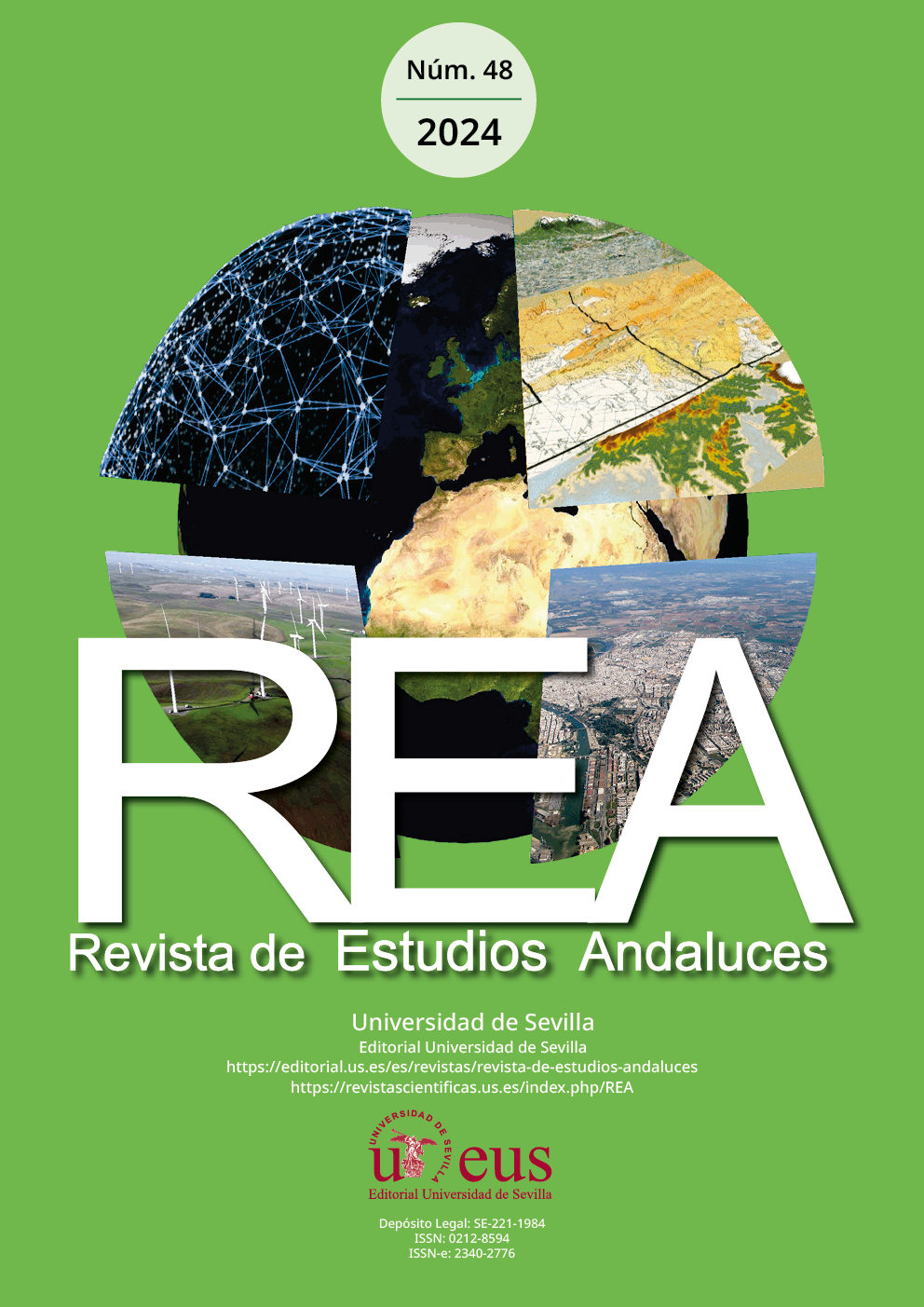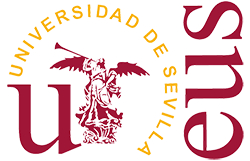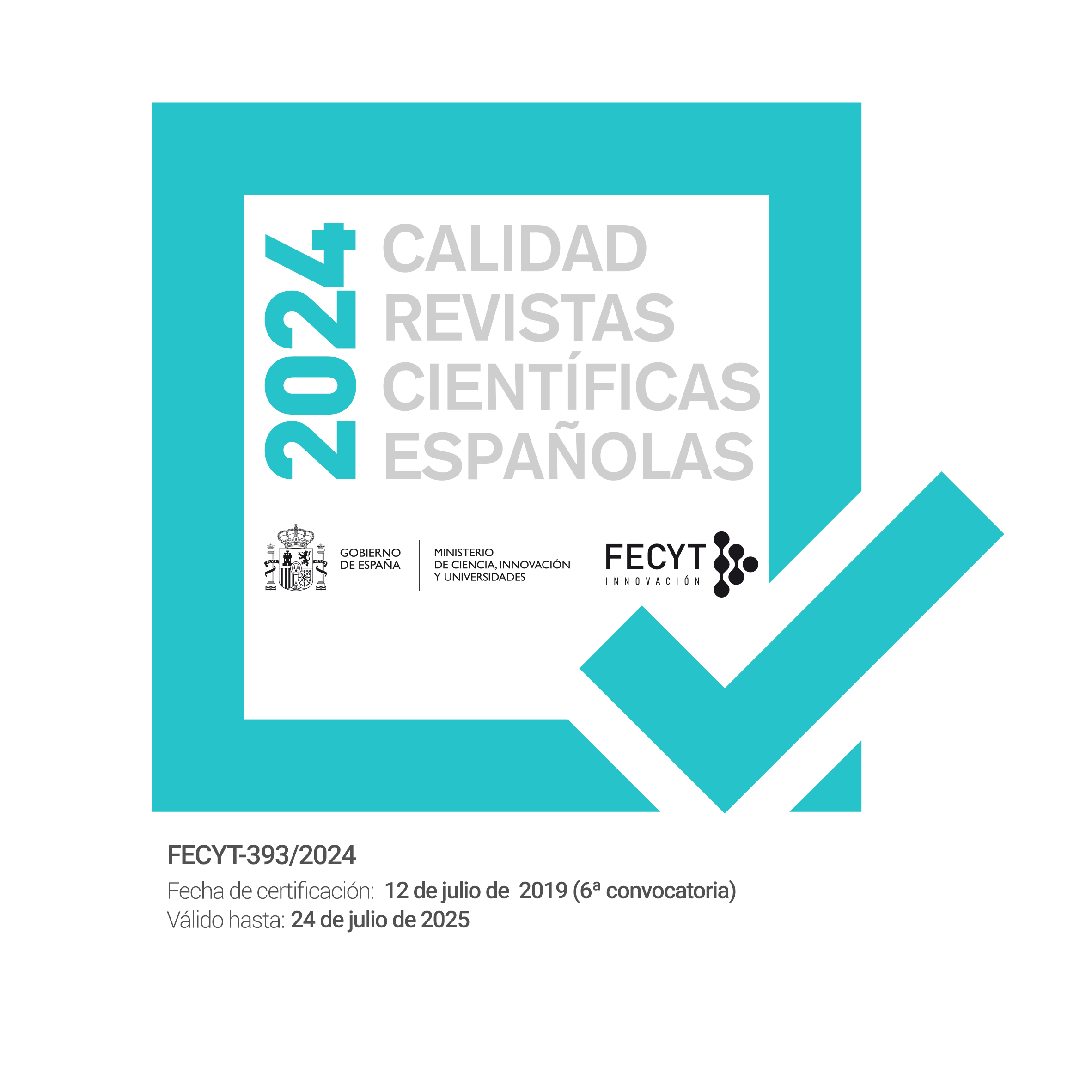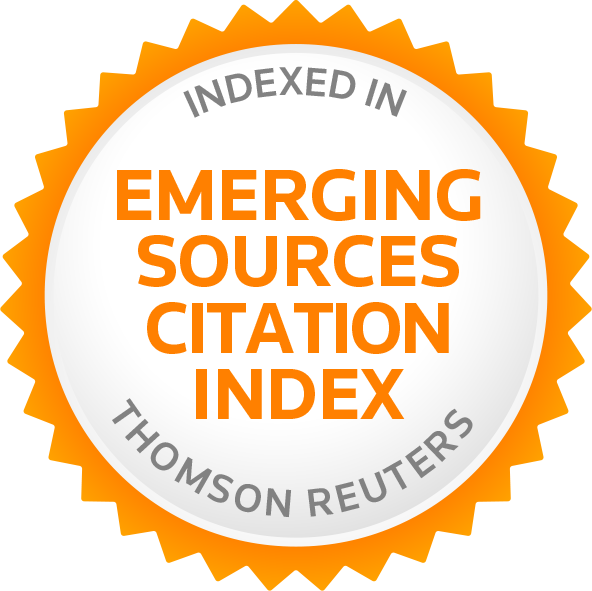Analysis of capital structure and roundaboutness. The case of colombian firms
DOI:
https://doi.org/10.12795/rea.2024.i48.08Palabras clave:
Correlación canónica, Finanzas corporativas, Estructura de capital, Intensidad de capital, Duración de Macaulay, Regresión umbralResumen
Las teorías financieras estándar asumen que las decisiones de inversión y financiamiento están entrelazadas. Las decisiones de inversión implican seleccionar activos que generen flujos de efectivo positivos y maximicen el valor para los accionistas, mientras que las decisiones de financiación implican identificar la combinación óptima de financiación con deuda y capital propio para financiar estas inversiones. El objetivo principal de este artículo es analizar la interdependencia de activos y pasivos en una muestra de empresas manufactureras colombianas clasificadas según su grado de roundaboutness (naturaleza intensiva en capital). Este estudio utiliza el análisis de correlación canónica para determinar la interacción entre los componentes del balance.
Posteriormente, se estima un modelo de regresión de umbral para examinar el impacto de los indicadores financieros en la rentabilidad del capital invertido para empresas con alto y bajo roundaboutness. Los hallazgos revelan que las empresas de baja intensidad de capital alinean la estructura de vencimientos de activos y pasivos, con activos a largo plazo sirviendo como garantía para obligaciones a largo plazo. En estas empresas se observa una relación significativa entre el rendimiento sobre el capital invertido, throughput, la rotación del capital de trabajo y la proporción de gasto de capital y el flujo de efectivo operativo. Sin embargo, esta relación no es significativa en niveles altos de endeudamiento. Por otro lado, las empresas intensivas en capital exhiben un desajuste entre los vencimientos de activos y pasivos, dependiendo de los fondos de los accionistas para financiar inventarios y activos a largo plazo. En este grupo de empresas, el throughput se asocia positivamente con el ROIC independientemente del nivel de endeudamiento, mientras que la relación entre la rotación del capital de trabajo y el ROIC no es significativa hasta superar cierto umbral de deuda. La influencia de la proporción de gasto de capital al flujo de efectivo operativo en el ROIC depende del nivel de endeudamiento, resultando en un efecto negativo para empresas con alto roundaboutness que superan un umbral de deuda.
Descargas
Citas
Adamu, A., & Haruna, J. (2020). Ownership structures and firm performance in Nigeria: A canonical correlation analysis. Journal of Research in Emerging Markets, 2(4), 21-32. https://doi.org/10.30585/jrems.v2i4.537
Aivazian, V.; Ge, Y., & Qiu, J. (2005). The impact of leverage on firm investment: Canadian evidence. Journal of Corporate Finance, 11(1-2), pages 277-291. https://doi.org/10.1016/S0929-1199(03)00062-2
Badii, M., Castillo, J., Cortez, A., & Villalpando, P. (2007). Análisis de correlación canónica (ACC) e investigación científica. Innovaciones de Negocios, 4(2), 405-422. http://eprints.uanl.mx/12486/1/A9%20%281%29
Ben Said, H., & Rim, Z.H. (2018). Tunisian bank asset-liability management: A canonical correlation analysis. Corporate Ownership & Control, 15(3-1), 230-238. https://doi.org/10.22495/cocv15i3c1p7
Bruyland, E., Lasfer, M., De Maeseneire, W., & Song, W. (2019). The performance of acquisitions by high default risk bidders. Journal of Bank Finance, 101, 37-58. http://dx.doi.org/10.1016/j.jbankfin.2019.01.019
Bolek, M., Kacprzyk, M., & Wolski, R. (2012). The relationship between economic value added and cash conversion cycle in companies listed on the WSE. Finansowy Kwartalnik Internetowy e-Finanse 8(2), 1-10.
Botte, Florian (2017). Estimating normal capacity utilization rates and their tolerable ranges of values: A comment on Setterfield. AFEP. Rennes. https://hal.science/hal-01543643
Cachanosky, N., & Lewin, P. (2014). Roundaboutness is Not a Mysterious Concept: A Financial Application to Capital Theory. Review of Political Economy, 26(4), 648-665. http://dx.doi.org/10.1080/09538259.2014.957475
Carvalho, A. C., & Carvalho, D. F. (2019). Financing of Private Investment in the View of Keynes-Minsky. Nexos Econômicos, 11(2), 83-112. https://doi.org/10.9771/rene.v11i2.26434
Caselli, S., & Negri, G. (2021). Theoretical foundation of private equity and venture capital (Third ed.). Academic Press. https://doi.org/10.1016/B978-0-323-85401-6.00002-3
Castañeda González, F., & Contreras Cortés, F. (2017). Los determinantes de la estructura de la madurez de la deuda corporativa. El caso de Chile. El Trimestre Económico, 84(334), 411-425. https://doi.org/10.20430/ete.v84i334.306
Castillo, M.B. (2017). Análisis de correlación canónica lineal y no lineal. Universidad Autónoma de Puebla. https://repositorioinstitucional.buap.mx/handle/20.500.12371/1131
Chauhan, G.S. (2021). Working capital dynamics. Australian Journal of Management, 46(1), 51-75. https://doi.org/10.1177/0312896220911440
Desoky, A.M., & Mousa, G.A.-H. (2020). The impact of intellectual capital on firm’s financial performance: empirical evidence from Bahrain. Investment Management and Financial Innovations, 17(4), 189-201. https://doi.org/10.21511/imfi.17.4.2020.18
Dallery, T. (2009). Post-Keynesian Theories of the Firm under Financialization. Review of Radical Political Economics 41(4) (2009): n.p. Accessed July 4, 2023. doi: 10.1177/048661340934137
Dimand, R. W. (2010). What Keynesian Revolution? A Reconsideration Seventy Years After The General Theory.
Di Bucchianico, S. (2020). A Neglected Route to Krugman’s Liquidity Trap Revival. Centro Sraffa Working Papers, 20. http://www.centrosraffa.org/public/5cae6f48-8148-446b-9ed4-e1c512526f5d.pdf
Edwards, H., & Lane, K. (2021). Why Are Investment Hurdle Rates So Sticky? Reserve Bank of Australia. https://www.rba.gov.au/publications/bulletin/2021/dec/pdf/why-are-investment-hurdle-rates-so-sticky.pdf
Eyerci, C. (2021). Theoretical Development and the Time Preference Theory. In The Causes and Consequences of Interest Theory. Palgrave Macmillan, Cham. https://doi.org/10.1007/978-3-030-78702-8_3
Fazzari, S.M., & Petersen, B.C. (1993). Working Capital and Fixed Investment: New Evidence on Financing Constraints. The RAND Journal of Economics, 24(3), 328-342. http://www.jstor.org/stable/2555961
Fratini, S. (2019). A note on re-switching, the average period of production and the Austrian business-cycle theory. The Review of Austrian Economics, Springer; Society for the Development of Austrian Economics, 32(4), 363-374, December. https://doi.org/10.1007/s11138-019-0432-0
Gertsen, M. (2019). Interest Rates, Roundaboutness, and Business Cycles: An Empirical Study. Quarterly Journal of Austrian Economics, 22(3), 311–35. https://doi.org/10.35297/qjae.010024.
Hansen, B.E. (1999). Threshold Effects in Non-Dynamic Panels Estimation, Testing and Inference. Journal of Econometrics, 93, 345-368.
Hastutik, S., Soetjipto, B. E., Wadoyo, C., & Winarno, A. (2021). Trade-Off and Pecking Order Theory of Capital Structure in Indonesia: Systematic Literature Review. Journal of Positive School Psychology, 6(5), 5585–5597. https://journalppw.com/index.php/jpsp/article/view/7624
Jang, S., & Kim, J. (2009). Revisiting the financing behavior of restaurant firms: The firm-size perspective. International Journal of Hospitality Management, 28, 177-179.
Kalecki, M. (1968). Trend and business cycles reconsidered. The Economic Journal, 78(2), 263-276.
Keynes, J.M. (1973). The general theory of employment, interest, and money. (Original work published 1936). The Collected Writings of J. M. Keynes (Vol. 7).
Li, X., Huang, L., Ren, A., Li, Q., & Zeng, X. (2022). The Effect of Production Structure Roundaboutness on the Innovation Capability of High-Tech Enterprises—The Mediating Role of Technology Absorption Path. Sustainability, 14(9), 1-14. https://doi.org/10.3390/su14095116
Luther, W.J. (2021). Two paths forward for Austrian macroeconomics. Rev Austrian Econ, 34, 289–297. https://doi.org/10.1007/s11138-020-00511-y
Mareta, F., Agustina, A., Prathamy, Z., & Moozanah, S. (2021). The Effect of Leverage, Liquidity, and Capital Intensity on Accounting Conservatism at PT Gudang Garam Tbk. Seminar Nasional Ekonomi dan Akuntansi. https://yahootechpulse.easychair.org/publications/preprint_download/pSng
Marita, W.E., & Permatasari, I. (2019). The Effect of Working Capital Management and External Capital on Going Concern for Indonesian Small and Medium Enterprises. Akrual: Jurnal Akuntansi, 11(1), 21-35. http://dx.doi.org/10.26740/jaj.v11n1.p21-35
Mediaty, M., Rachmatullah, M., & Habbe, A.H. (2023). Effect of Working Capital Turnover and Turnover Receivables on Company Profitability Food and Beverage Sector Manufacturing Registered on the Indonesia Stock Exchange. Indonesian Journal of Interdisciplinary Research in Science and Technology, 1(11), 957–966. https://doi.org/10.55927/marcopolo.v1i11.7277
Mielcarz, P., Osiichuk, D., & Behr, A. (2018). The influence of capital expenditures on working capital management in the corporate sector of an emerging economy: the role of financing constraints. Economic Research-Ekonomska Istraživanja, 31(1), 946-966. https://doi.org/10.1080/1331677X.2018.1436450
Moussa, A.A. (2018). The impact of working capital management on firms’ performance and value: evidence from Egypt. Journal of Asset Management, 19, 259–273. https://doi.org/10.1057/s41260-018-0081-z
Nakagawa, H., & Ohta, H. (2019). Economics and Communication. Multi-stage Roundabout Production. The Aoyama Journal of International Politics, Economics and Communication, 102(5).
Nazir, A., Azam, M., & Khalid, M. U. (2021). Debt financing and firm performance: empirical evidence from the Pakistan Stock Exchange. Asian Journal of Accounting Research, 6(3), 324-334. https://doi.org/10.1108/AJAR-03-2019-0019
Nguyen, H.T. & Nguyen, A.N. (2020). Determinants of Firm Capital Structure: Empirical Evidence From Vietnam. International Journal of Financial Research, Sciedu Press, 11(4), 10-22. https://doi.org/10.5430/ijfr.v11n4p10
Nyachieo Ndege, J. (2017). Relationship between working capital management and financial performance of manufacturing firms in Kenya. http://hdl.handle.net/11295/100058.
Nicolas, T. (2022). Short-term financial constraints and SMEs’ investment decision: evidence from the working capital channel. Small Bus Econ 58, 1885–1914. https://doi.org/10.1007/s11187-021-00488-3
Osei, A., Osei Agyemang, A., Owusu Amoah, J., & Sulemana, I. (2023) Empirical study on the impact of working capital management on going concern of manufacturing firms in Ghana. Cogent Business & Management, 10(2), https://doi.org/10.1080/23311975.2023.2218177
Reina Aranza, Y.C., Barcos Robles, R., Aguilera Díaz, M.M., Yabrudy Vega, J., & Orozco Gallo, A.. (2017). Evolución socioeconómica de la región Caribe colombiana entre 1997 y 2017. Revista del Banco de la República, 90(1078). https://www.cervantesvirtual.com/obra/evolucion-socioeconomica-de-la-region-caribe-colombiana-entre-1997-y-2017-1124429
Resić, E., Mangafić, J., & Peric, T. (2015). Statistical analysis of causality between capital structure and firm profitability: Evidence from Bosnia and Herzegovina. Croatian Review of Economic, Business and Social Statistics, 1(1), 1-11
Stowe, J.D., Watson, C.J., & Robertson, T.D. (1980). Relationships between the Two Sides of the Balance Sheet: A Canonical Correlation Analysis. Journal of Finance, 35(4), 973-980. http://www.jstor.org/stable/2327214
Sraffa, P. (1932). Dr. Hayek on money and capital. Economic Journal, 42(1), 42–53.
Sulistiani, A., & Agustina, L. (2020). Determinants of Debt Policy with Profitability as a Moderating Variable. Accounting Analysis Journal, 8(3), 184-190. https://doi.org/10.15294/aaj.v8i3.35181
Telles, K. (2023). From Austrian theory of capital to dissent: Nicholas Kaldor, Friedrich A. Hayek and the way to disequilibrium. Economia, 24(1), 86-114. https://doi.org/10.1108/ECON-10-2022-0139
Theissen, M. H., Jung, C., Theissen, H. H., & Graf-Vlachy, L. (2023). Cash holdings and firm value: Evidence for increasing marginal returns. Journal of Management Scientific Reports, 1(3-4), 260-300. https://doi.org/10.1177/27550311231187318
Thi, M.; Ha, T., & Thanh, D. (2023) The impact of firm leverage on investment decisions: The new approach of hierarchical method. Cogent Business & Management, 10(2), https://doi.org/10.1080/23311975.2023.2209380
Trezzini, A., & Pignalosa, D. (2021). The Normal Degree of Capacity Utilization: The History of a Controversial Concept. Centro Sraffa Working Papers CSWP49, Centro di Ricerche e Documentazione “Piero Sraffa”.
Valencia Herrera, H., (2015). Complementariedad de las inversiones a largo plazo y de capital de trabajo ante oportunidades de negocios y consideraciones de liquidez en países latinoamericanos. Estudios Gerenciales, 31, 364-372. http://dx.doi.org/10.1016/j.estger.2015.07.004
Wei, H., & Yao, H., (2022). Environmental Regulation, Roundabout Production, and Industrial Structure Transformation and Upgrading: Evidence from China. Sustainability, 14(7), 3810. https://doi.org/10.3390/su14073810
Wicksell, K. (1954). Value, capital, and tent (S. H. Frowein, Trans.). George Allen & Unwin.
Zaher, H., & Illescas, G.M. (2020). The moderating effect of firms’ cash holding on the relation between cash conversion cycle and firm performance. In Economic and Social Development: Book of Proceedings (pp. 307-316). Varazdin Development and Entrepreneurship Agency.
Descargas
Publicado
Cómo citar
Número
Sección
Licencia
Derechos de autor 2024 Revista de Estudios Andaluces

Esta obra está bajo una licencia internacional Creative Commons Atribución-NoComercial-CompartirIgual 4.0.
La edición electrónica de la Revista de Estudios Andaluces se ofrece en acceso abierto desde el número 28 publicado en 2011 hasta la actualidad. Las ediciones impresa y electrónica de esta Revista son editadas por la Editorial de la Universidad de Sevilla, siendo necesario citar la procedencia en cualquier reproducción parcial o total.
La Revista de Estudios Andaluces no cobra tasas por el envío de trabajos, ni tampoco cuotas por la publicación de sus artículos. La Revista es gratuita desde el momento de la publicación de cada número y sus contenidos se distribuyen con la licencia “CreativeCommons Atribución-NoComercial-SinDerivar 4.0 Internacional” , que permite al usuario de la Revista de Estudios Andaluces criterios que cumplen con la definición de open access de la Declaración de Budapest en favor del acceso abierto. Puede consultar desde aquí la versión informativa y el texto legal de la licencia. Esta circunstancia ha de hacerse constar expresamente de esta forma cuando sea necesario.







